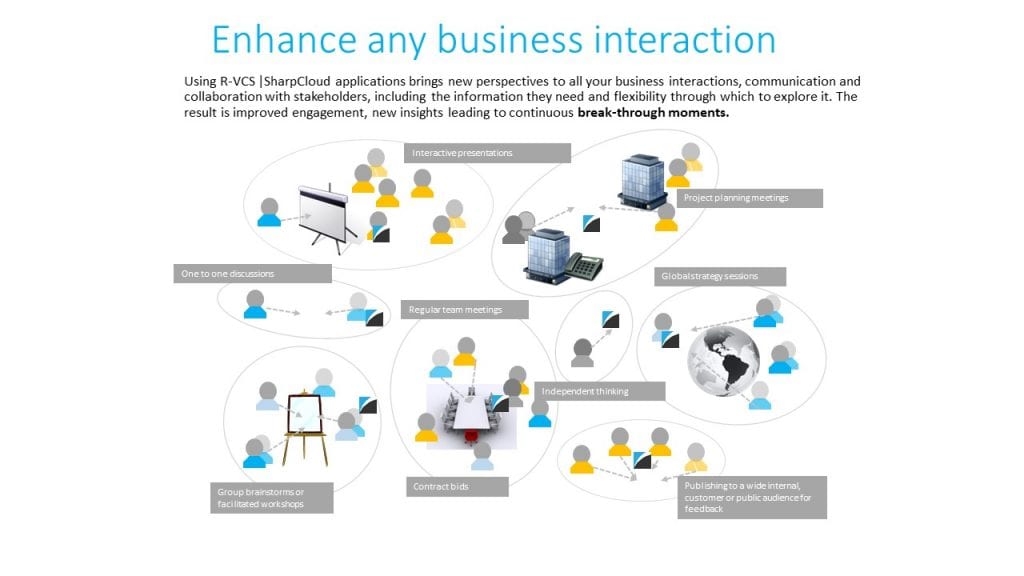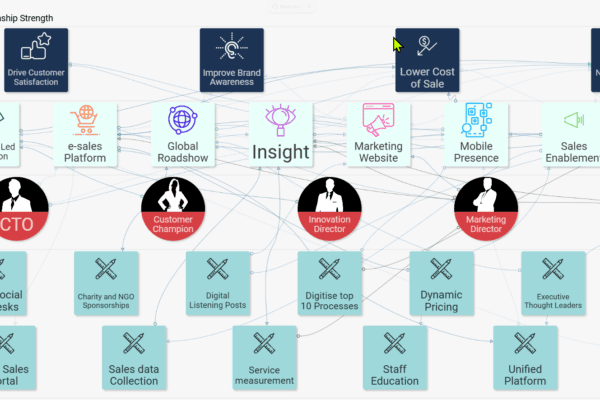Business Challenges and Problems
Every day you face business problems and challenges that you have to overcome so you can move forward. Some are relatively simple and can be fixed quickly, while others are more a bit more complex and take longer to solve.
What kind of problems do you have and need to fix?
Top Ten Business Problems
According the Lean Methods Group based on their research, interviews with corporate CEO’s and other inputs they identified these top 10 problems faced by businesses, which I am sure some if not all, you will recognise within your business:
- Uncertainty – balancing short term focus with needs for informed, long term strategies and roadmaps.
- Globalisation – better understanding of markets and cultures through better information gathering, analysis, what it means and collaboration
- Innovation – become more innovative while maintaining a sense of control
- Government Policy and Regulation – understand the meaning, implications and impact for your business
- Technology – develop a long-term technology strategy/roadmap while remaining flexible and agile
- Diversity – define what diversify really means in your business, then foster the expansion of differing ideas and viewpoints in safe, secure and efficient environment
- Complexity – develop better systems-thinking capability so you can simplify business models, processes, products and services
- Information Overload – deal with the mountain of information with both technology and human know-how
- Supply Chains – develop a collaborative partnering and supply chain strategy
- Strategic thinking and problem solving – critical for successful businesses
These problems can show up in various ways and are typically interconnected. Lets take “Complexity“, which can include business processes that have to be completed by many people, at the same time to produce an outcome, such as a business or project report for example.
Using the report example for your business, how many people are involved, do you have the right amount of “Diversity“, how many business processes are completed (or not as the case may be), how many documents and forms do you need to access and complete across your “Technology” systems? All this data and information opens you to “Information Overload!”
Think about the functional meetings you (need to?) attend with other colleagues in different locations (“Globalisation”), the data and information that needs to be created, collated and shared before, during and after the meeting to produce just one part of the report.
There could be several internal functional meetings (Finance, Marketing, Sales, Production, Project Management, Quality, Commercial, etc.) involving multiple colleagues adding more “Complexity“.
What about external meetings with “Supply Chains“, understanding the external context in terms of “Government Policy & Regulation?” These need to be combined along with your “Strategic Thinking and Problem Solving”, so theses outputs are integrated, rolled up and easily co-created and shared in a business or project report/dashboard visualisation.
These project reports are reviewed and added together to create a region, business unit , program or portfolio report. The lack of “Innovation, Strategic Thinking and Problem Solving” means the same process is repeated again at different levels within your business and completed on a regular basis, daily, weekly or monthly.
Just think about all of the time and money to complete these non adding value tasks so you can get a report or status of what is going on. By the time you get it, days if not weeks could have elapsed, so you are reviewing out of date information and making decisions that could be wrong – leading to “Uncertainty“.
Reporting is just one example of a business problem that potentially needs to be solved in your business. I am sure there are many more that you can think of.
Making problem solving easier
Clearly solving problems requires leadership, peoples willingness, effort and input to solve. Having proven methodologies and processes that can be used across your business in a consistent and co-ordinated way facilitates the problem solving, supported by appropriate tools and systems.
Without a doubt, using “office productivity” tools such as spreadsheets and databases like Microsoft Excel and Access with presentation software such as PowerPoint or similar, are probably used widely within your business. Their flexibility and wide use of adoption supports a fairly easy way to “brainstorm”, collate and analysis data, review and communicate the outputs and results in the form of presentations that are shared via email or in a “chat”.
But just as we discussed, having disjointed, repetitive and silo ways of working in your business that now have to operate in a more complex way of working, probably raises more problems for you. This added complexity as a result of hybrid working, and trying to solve these business problems the same way you did before, is not going to work. You need to look at your behaviours, ways-of-working, processes, systems and tools and make the necessary changes.
Visual collaboration productivity tools
I am sure you now have a video conferencing platform/tool imbedded into your business, such as MS Teams, Zoom, WebEx, etc. to enable your people to work from different locations. You may have also noticed that your existing productivity tools such as MS Excel, Google docs and the like, have now incorporated more collaborative working functionality. To be fair, this was available before hybrid working became more widely used.
However, despite hybrid working there is still the need to use tools that can address the problems stated earlier and cover multiple business user cases such as:
- Business/project analysis – sharing, combining and visualising data
- Customer presentations
- Completing workshops – small to enterprise wide
- Developing strategic roadmaps (business, technology, innovation)
- One to one sessions
- Ideation and innovation
- Contract review
- Project/Enterprise Portfolio Management
- Risk management
- the list goes on….
Yes you can try and use your existing tools, but do they really support the way you now work with internal colleagues and external business partners and supply chains?

How SharpCloud Can Help Your Solve Problems
SharpCloud is a no code/low code visual collaboration platform that enables you to create business productivity solutions that supports your hybrid working and helps to solve your business problems, such as the top ten business problems listed at the beginning.
Working remotely restricts how you and your colleagues can interact and work with one another. I don’t just mean sharing your screen, presenting and talking/seeing one another. I mean actually co-creating and completing work.
How would you complete a hybrid workshop, or develop your business plan or review and update your business projects and initiatives? There would probably be several documents, spreadsheets, presentations, multiple emails and chats to help make it all happen. Along with the new/different ways of working and the various tools you need to use, it can get very complicated and difficult to complete.
Data Collaboration
IT products typically have a specific purpose and function such as Project Management, Customer Relationship Management, Financial, etc. They are standalone Line of Business Systems (LoBS) that most businesses have. You need a tool that allows you to use data from these systems as well as you being able to create your own data and combine it together – “data collaboration“.
These LoBS naturally create both “data and work silos”, which act as barriers to hybrid working. Plus you still have all the other digital content such as spreadsheets, documents, presentations, video’s, images, etc. that you will continue to use and create. Most importantly is the knowledge and experience that your people have that you still need to combine with this other data and information. You need to be able to create a data culture and see this data in a very visual way, aligned to your audience, for example in a timeline view for project managers or as a x/y plot for financial accountants or business analysts.
It would be impossible to have a product/tool that could accommodate all the user cases within every business, along with different functions and people working in different locations, accessing and using data from various LoBS.
This is where the SharpCloud flexibility and agility to deliver multiple business user cases (Stories) that can visualise data and create data driven views, yet enable people to interact and put all of it into context can be used. As a result you can start to simplify complex decision making, uncover insights across your business and reduce uncertainty.
Digital Collaboration
Once you have created your business solution, putting it to work in a hybrid working environment needs to be done in a quick, secure and easy way to help you improve your productivity and overall business performance.
SharpCloud is a software-as-a-service (SaaS), which can be deployed either in a public or private cloud. You can create Teams and Private Directories to ensure you have the right people working together and or viewing business information through visual, interactive dashboards, portfolios, roadmaps or whatever solution you have deployed.
You can enhance your video conferencing experience and overall digital collaboration by using your SharpCloud business solution(s) to improve your decision making and deliver business outcomes successfully for different parts of your business:
- IT and Technology
- Project Portfolio
- Enterprise Risk Management
- Agile Project Management
- Digital Workshops
- Business Collaboration and Partner Relationships
Using SharpCloud as part of your business digital collaboration solution, helps you to increase business productivity even more, with access from any device and instant updates, ensuring your data driven views and presentations are always showing the latest facts and figures. No more out of date presentations or missing slides!
You can still use your existing productivity tools such as Office 365 applications – Excel, PowerPoint or LoBS by either attaching or integrating them via Resource links or HTML panels, so you can see and access everything in one place.
SharpCloud becomes your real time business portal where people and data can work in harmony.
Discover how SharpCloud can solve your business hybrid working problems
Sharpcloud is not a “silver bullet” that is going to solve all of your business problems. As you know there are multiple other tools out there such as Monday.com, Trello, Aha, Service Now, to name but a few.
However, being able to create visual collaborative solutions within minutes, that can help you address the key problems we have discussed and multiple user cases for any type of business sector by non IT businesses users, makes SharpCloud a platform well worth considering for your hybrid way of working.
By combining SharpCloud with your existing collaboration tools, systems and your new ways of hybrid working, SharpCloud will help you to work much more effectively, efficiently and collaboratively.
Here are some more examples of how you can use SharpCloud to develop your own SharpCloud business solutions/apps to solve common business problems.
To discover how, just click the button below to attend a Free SharpCloud Webinar.



